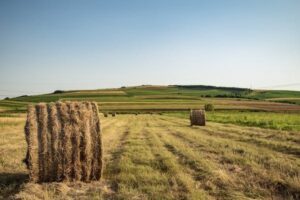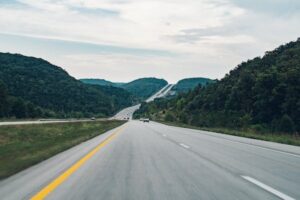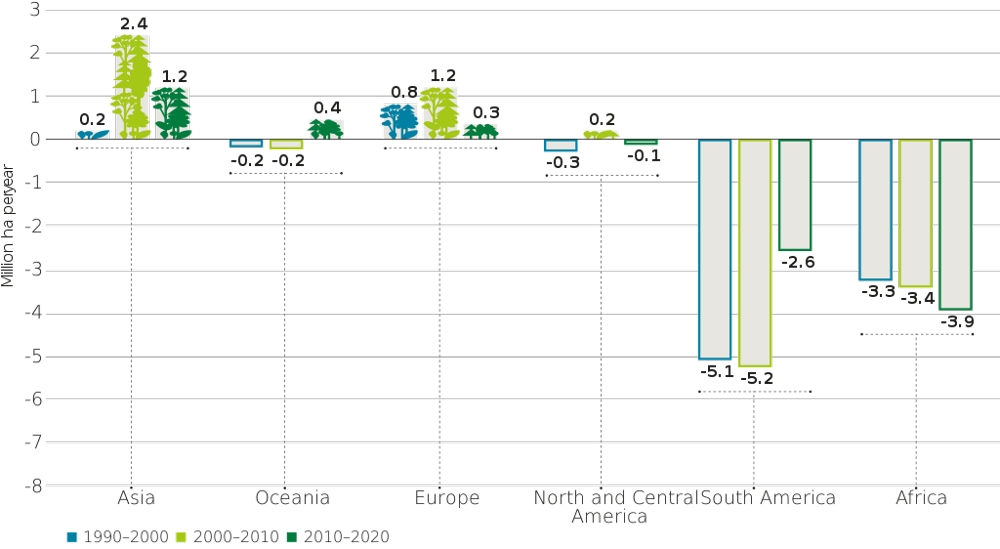Deforestation Unveiled: A Comprehensive Exploration

In the modern era, deforestation is a tough issue that goes far beyond the clearing of trees. It’s about ecosystems and the fate of our planet.
Table of Contents
This comprehensive guide aims to unravel the intricacies of deforestation, weaving together data, and the imperative for sustainable solutions. It’s a journey to understand a problem that transcends boundaries and touches the heart of humanity.
What is Deforestation?
Deforestation can be defined as;
Forest conversion to other land uses (regardless of whether it is human-induced).
The Food and Agriculture Organization (FAO)-UN
“Deforestation” and “forest area net change” differ. The latter is the sum of all forest losses and gains in a given period. Net change can be positive or negative. It depends on whether gains exceed losses, or vice versa.
While it’s not a new problem, the speed of deforestation in recent years is cause for concern.
Behind every clearcut forest, there’s a story of communities and indigenous peoples who have depended on these lands for generations. Families lose their homes and livelihoods as the forest disappears.
Forests are like the Earth’s lungs, constantly breathing life into our planet. They provide us with the air we breathe, shelter for countless creatures, and a sanctuary for our spirits.
We can define deforestation as;
Deforestation is the deliberate, often largescale removal of forests. It typically for the purpose of land conversion, agriculture, urban development, and industrial activities.
Beyond their vital role in maintaining our climate and supporting biodiversity, forests offer solace and tranquility to those who seek refuge in their serene embrace. These majestic woodlands are the backdrop to countless cherished memories, from family picnics beneath the towering trees to romantic walks through dappled sunlight.
They are not just ecosystems; they are living, breathing companions on our journey through life, reminding us of our interdependence with the natural world.
History of Forest Elimination
The story of deforestation is an intricate and age-old tale of humankind’s dance with the world’s forests.
Ancient civilizations like the Romans, Sumerians, Egyptians, and Greeks made their mark as the ages unfolded. They had an unquenchable thirst for wood for construction, ships, and fuel. This drove them to clear vast stretches of forests, often without sustainable practices.

In their exploration era, the Americans faced extensive deforestation as European colonizers set foot on new lands, clearing forests to build settlements. It was a profound transformation, altering the landscapes and ecosystems forever.
But some of the darkest pages of history were written by the Industrial Revolution. The hunger for timber for construction, fuel for machinery, and land for agriculture knew no bounds. Some regions are tilted on the verge of total deforestation.
Thankfully, the 19th and 20th centuries brought a ray of hope. Figures like Theodore Roosevelt and John Muir championed the cause of conservation. They fought for the creation of protected areas, preserving pockets of wilderness for generations to come.
Yet, the shadow of modern deforestation endangers large. Agriculture’s relentless expansion, the ceaseless hum of chainsaws for logging, and urbanization, all take a toll on forests. The magnificent rainforests of the Amazon, Africa, and Southeast Asia are at risk, their survival hanging in the balance.
Causes of Deforestation?
As we uncover the causes behind deforestation, we find ourselves navigating through the human and environmental landscapes that drive this critical issue. From the expansion of agriculture to the extraction of timber and the impact of climate change, we’ll explore the intricate web of factors contributing to the loss of our forests.
Agricultural Expansion

Agriculture is essential for feeding the world’s growing population. However, the pressure to clear land for crops often leads to deforestation, and it’s about survival rather than just economics.
Small-scale farmers often resort to slash-and-burn techniques to prepare land for cultivation.
Agriculture expansion causes 80% of global deforestation according to FAO. The prime culprits are crops like soy and palm oil. The demand for these products driving deforestation in places like the Amazon and Southeast Asia.
Logging and Timber Extraction

Timber has been a valuable resource for human civilization for centuries.
Communities depend on logging for their livelihoods from around the world. However, unregulated logging practices can lead to deforestation.
A study published in Nature Communications in 2021 estimated that 3% of global deforestation is attributed to illegal logging. It causes significant environmental and economic losses.
Sustainable forestry management and the enforcement of logging regulations are crucial to combat this issue.
Infrastructure Development

Infrastructure development is a sign of progress. It provides communities with better access to education, healthcare, and economic opportunities. Yet, urban infrastructure often requires the clearing of forests.
A 2019 study found that infrastructure development was a significant driver of forest loss in the tropics.
Rapid urbanization exacerbates this issue. It was majorly driven by population growth and economic development.
Mining and Oil Extraction

These are lucrative industries and provide valuable resources for energy and manufacturing.
These activities involve the removal of forests to extract valuable resources through mining.
Oils, stones, and other resources are majorly derived from cultivating lands, leaving them to become dry and barren. Tropical deforestation’s one-third proportion is linked to mining.
It was a result of a survey by the World Resource Institute. It causes long-term environmental damage to livelihood and climate.
Causes of Deforestation
In the fabric of deforestation, our choices are the roots, defying and disrupting the biodiversity and ecosystem of our planet. There are plenty of major factors contributing to forest depletion such as…
Land Conversion
Land conversion involves changing forested areas into other land uses. Such as agriculture, housing, or industrial sites.
This is a direct driver of deforestation. It results in the permanent loss of forest cover and its associated biodiversity and ecosystem services.
These causes of deforestation underscore the complex interplay between human needs and environmental preservation
Consequences of Forest Destruction
Once we grasp the causes, we must confront the often devastating deforestation effects. From the loss of biodiversity to the far-reaching impacts on our climate, ecosystems, and human societies, we’ll uncover the true extent of the price we pay for the destruction of our forests.
Loss of Biodiversity
Biodiversity loss due to deforestation is a global tragedy. It’s about the disappearance of unique species. It’s also about the communities and cultures that rely on these ecosystems for their well-being and heritage.
The World Wildlife Fund (WWF) reports that over 80% of the world’s animals and plants live in forests. As these habitats are destroyed, species go extinct. The ecosystems destabilize, and local communities lose valuable resources.
People often living in forested regions such as Amazon rainforest indigenous tribes, are particularly vulnerable to such changes.
They have deep connections with nature and dependence on the forest. They are disproportionately affected by deforestation for their livelihoods and cultural practices.
Climate Change and Greenhouse Gas Emissions
Climate change is not a distant threat; it’s affecting communities now. The release of stored carbon dioxide by forest burning exacerbates the problem.
Deforestation causes 20% of global greenhouse gas emissions. It is more than the entire global transportation sector.
Research by the Intergovernmental Panel on Climate Change (IPCC) highlights the critical role of forests. It helps sequester carbon dioxide.
Related Pick: How Does Deforestation Affect the Carbon Cycle?
People face the consequences of sea level rise in coastal areas. Farmers deal with erratic weather patterns and reduced crop yields.
Vulnerable communities are at the forefront of climate change’s adverse effects.
Disruption of Ecosystem Services
Ecosystem services, such as clean water, pollination, and climate regulation, are vital for human survival. Deforestation disrupts these services by directly impacting communities.
A study in Nature Communications in 2020 estimated that tropical deforestation disrupts 31% of the global provision of multiple ecosystem services. Reduced water quality, more frequent flooding, and decreased agricultural productivity are some of the outcomes.
Rural communities that depend on forested watersheds for clean water, experience reduced access to safe drinking water.
Farmers reliant on forest pollinators, like bees, face reduced crop yields.
Socioeconomic Impacts
The consequences of deforestation extend to the human economy and livelihoods.
Communities face displacement, lost income, and increased vulnerability.
The World Bank estimates that 100 million people live in extreme poverty. Specifically, in areas at high risk of deforestation. The loss of forest resources can plunge communities deeper into poverty.
These resources involve both timber and non-timber forest products.
Small-scale farmers and indigenous peoples often bear the brunt of deforestation’s socioeconomic impacts. They lose not only their homes and sources of income but also their way of life
Soil Erosion

The removal of forest cover exposes soil to erosion, which can lead to the degradation of fertile topsoil. Soil loses its moisture and erodes.
It ultimately makes this land useless for any agricultural development or even urbanization.
This loss of soil fertility impacts agriculture, water quality, and the overall health of ecosystems. It has long-term effects as a lack of food, water, and a sustained ecosystem for living beings.
Disruption of Water Cycles
Forests play a crucial role in maintaining water cycles. They help regulate rainfall, prevent floods, and provide freshwater sources.
Deforestation can disrupt these cycles. It might lead to altered water availability. Ultimately, increased risks of floods, droughts, and water quality degradation.
Air and Water Pollution
The destruction of forests can lead to increased air and water pollution.
Air quality may suffer due to the release of pollutants from deforestation activities, affecting respiratory health.
Water sources may also become contaminated as sediments and pollutants wash into rivers and streams, impacting water quality and posing health risks.
Disease Outbreaks
The disruption of ecosystems through deforestation can sometimes lead to an increase in disease transmission.
When natural habitats are disturbed, it can bring humans into closer contact with wildlife and their associated diseases. This can potentially result in disease outbreaks and public health concerns.
These consequences remind us that the effects extend far beyond environmental issues. And that they have profound implications for communities and cultures worldwide.
Explore the Impact: Effects of Deforestation on Climate, Biodiversity, and Communities
The communities have long relied on forests for resources. The scale and intensity of deforestation have drastically increased in recent centuries and so as the consequences..
Deforestation Hotspots
Our exploration takes us to specific regions of the world that serve as epicenters of deforestation. The Amazon Rainforest, Southeast Asia, Central Africa, and the Boreal Forests all hold unique stories of struggle and resilience against the relentless force of deforestation.
Deforestation in the Amazon Rainforest and Brazil
The Amazon Rainforest is not just a global ecological treasure; it’s home to millions of people, many of them indigenous tribes. No matter how accurate animals camouflage in trying to defend themselves and their homes. Deforestation threatens their homes, traditions, and access to vital resources.
Related Pick: Discover the Wild Wonders of Amazon Rainforest Animals
The National Institute for Space Research (INPE) in Brazil reported that deforestation reached a 15-year high in 2020. This trend accelerates biodiversity loss and contributes to climate change.
Indigenous leaders like Raoni Metuktire from the Kayapó people have become global advocates for the Amazon. Their struggles against illegal loggers and land invaders humanize the impacts of deforestation.
Deforestation in Southeast Asia
Southeast Asia is home to vibrant cultures and diverse ecosystems.
Deforestation in Southeast Asia specifically Indonesia often results from palm oil plantations and timber industries, affecting the livelihoods of local communities.
The Union of Concerned Scientists reports that Indonesia has one of the world’s highest deforestation rates. The conversion of forests to palm oil plantations has both local and global consequences.
Organizations like the Orangutan Foundation International work tirelessly to save endangered species. Such as; orangutans, whose habitat is threatened by palm oil production.
Deforestation in Central Africa
Central Africa’s forests are a lifeline for many communities, providing food, medicine, and building materials. Yet, deforestation in Africa driven by logging and agriculture is disrupting these vital resources.
The World Wildlife Fund (WWF) reported that Central Africa is experiencing the highest deforestation rates. The loss of forests here impacts biodiversity and the climate.
Deforestation in Boreal Forests
The vast Boreal Forests in the Northern Hemisphere are home to indigenous communities that have thrived there for generations.
They form a ring around the North Pole and are a part of the largest terrestrial biome. They account for 27% of the world’s total forest area.
The Boreal Forests are under threat and majorly involve threats from logging and resource extraction. Deforestation affects both biodiversity and the communities on these landscapes.
These deforestation regions demonstrate the global nature of the problem, affecting not only nature but also human lives and cultures.
Understanding these specific regions helps us appreciate the urgency and complexity of addressing deforestation on a worldwide scale.
Forest Reduction Statistics and Data
Deforestation statistics vary by region and alter over time. The Food and Agriculture Organization (FAO) tracks deforestation statistics that help to understand the magnitude of the problem.
Global Deforestation Rates
The report by FAO of the United Nations: ‘Global Forest Resources Assessment 2020‘, provides important statistics and insights about the world’s forests.
The world is adorned with 4.06 billion hectares of forests. It covers about 31% of the Earth’s total land area. These forests are nature’s masterpieces, providing life, shelter, and enchantment.
In the heart of the world, the tropical domain reigns supreme, cradling 45% of the Earth’s forests. But it’s not alone in this grandeur; the boreal, temperate, and subtropical regions also share the magic.


Since 1990, our world has witnessed the silent disappearance of 178 million hectares of forest.
Yet, there’s a ray of hope. Because the rate of net loss slowed from 7.8 million (’90s) to 4.7 million hectares/year in the last decade.
Several nations stand as guardians of the world’s forests. Majorly, Southeast Asia, Brazil, the United States of America, and China.
Deforestation is a significant environmental concern. It’s essential to understand the numbers and the impact on these regions.
Amazon Rainforest and Brazil
The Amazon rainforest is one of the most critical ecosystems on Earth. It has been facing ongoing deforestation for decades. Brazil is a significant contributor to Amazon deforestation.
The Amazon rainforest encircles approximately 5.5 million square kilometers. Brazil has the largest share (60%) of the Amazon within its borders. Deforestation here is regulated by the Forest Code and the Brazilian Environmental Crimes Law.
In 2020, the deforestation rate was estimated at around 11,088 square kilometers with a 9.5% increase from the previous year. Brazil lost 13,235 square kilometers of forest between August 2020 and July 2021. It marked a 43% increase from the previous year.
Major drivers of deforestation include agriculture (particularly soy and beef production). Others are logging, mining, and infrastructure development.
The Brazilian government has undertaken various initiatives to combat deforestation. It includes satellite monitoring and law enforcement
Africa
Deforestation is a complex issue in different regions of Africa. Approximately 70 million hectares of tropical rainforest in the Congo Basin. The annual loss of these forests is 0.3-0,5% approximately.
In Africa, the major drivers of deforestation include agriculture, logging, infrastructure development, and fuelwood collection. Deforestation rates vary across Central African countries.
Organizations and governments have been working to establish protected areas. They are also focusing on sustainable management practices.
Asia
Deforestation in diverse regional patterns of Asia is also a major concern.
Indonesia and Malaysia have experienced high rates of deforestation due to palm oil production. It also incorporates logging and land conversion. In Indonesia, palm oil cultivation is causing upto 40% of the country’s total deforestation.
India and Nepal have faced deforestation due to urbanization and agricultural expansion. China has embarked on large-scale afforestation and reforestation efforts. It aims to increase forest coverage by 6% in 2020.

Efforts to address deforestation in these regions often include a combination of government policies. Along with international cooperation, sustainable land management, and conservation initiatives. To perform actions to address this critical global issue, staying up-to-date is crucial.
Data Sources and Monitoring Tools
Monitoring tools play a crucial role in tracking deforestation. These include satellite imagery and remote sensing technology.
Organizations like Global Forest Watch (GFW) and FAO provide real-time data and interactive maps. That helps policymakers, researchers, and the public monitor deforestation hotspots.
Challenges & Controversies
Deforestation has developed certain challenges and controversies attached to it. From conservation to the impact of consumer choice, the challenges to addressing deforestation are of utmost importance.
Balancing Economic Development and Conservation
The balance between economic development and conservation is a challenging aspect of deforestation.
Many countries face the dilemma of needing to develop industries and infrastructure. To improve the standard of living for their citizens while protecting their natural resources.
Finding sustainable, environmental solutions remains a complex and contentious issue. These are crucial to promote both growth and conservation.
Political and Corporate Interests
Deforestation often intersects with political and corporate interests. That makes it difficult to implement effective conservation measures.
Powerful industries can have significant influence over policies and regulations. The challenge lies in ensuring that these interests align with environmental goals. Rather than causing harm to forests and ecosystems.
Enforcement of Environmental Laws
The enforcement of environmental laws and regulations is a significant challenge in many regions. Weak governance and corruption can undermine efforts to combat deforestation.
Strengthening the rule of law, improving accountability, and enhancing enforcement mechanisms are essential steps in addressing this issue effectively.
Impact of Consumer Choices
Consumer choices have a considerable impact on deforestation. Purchasing products derived from unsustainable practices, such as illegal logging or non-certified palm oil, can drive deforestation.
Educating consumers about the environmental consequences of their choices and providing sustainable alternatives is crucial in addressing this issue.
Solutions to Forest Degradation
In our pursuit of solutions, we’ll explore the various paths to combat deforestation. From reforestation to sustainable logging practices, conservation, and the power of consumer choices, we’ll uncover the tools at our disposal to protect our forests.
Sustainable Agricultural Practices
Sustainable agricultural practices can help balance the need for food production with forest conservation. Majorly known are agroforestry and organic farming.
Implementing practices can help mitigate the environmental impact of development. Such as green infrastructure and wildlife corridors. It’s beneficial for both humans and wildlife.
Supporting alternative sources can help reduce the impact of mining and oil extraction on forests.
Supporting certification programs like Fair Trade and Rainforest Alliance encourages responsible farming.
Conservation Efforts
Conservation efforts are a testament to human determination to reverse the damage caused by deforestation. Protecting ecosystems, wildlife, and cultures is the major aim.
The World Wildlife Fund and The Nature Conservancy work on the ground. To protect forests and engage with local communities, demonstrating conservation.
Sustainable Logging Practices
Sustainable logging practices are crucial for meeting the demand for timber. Specifically, while preserving forests. A balance between economic development and conservation can be found through this.
The Forest Stewardship Council (FSC) promotes the forestry management. The FSC-certified forests showed lower deforestation rates according to a study published in Environmental Science & Policy.
Logging companies and communities are working together to ensure responsible harvesting. Prominently of timber, supporting local economies without causing irreversible harm to forests.
Reforestation and Afforestation
Reforestation and afforestation efforts are not just about planting trees. They are about restoring ecosystems, providing livelihoods, and mitigating climate change.
According to the Bonn Challenge, over 170 million hectares of deforested land have been pledged for restoration. It refers to a global effort to restore forests. These projects help combat deforestation, create jobs, and improve local living conditions.
Reforestation and afforestation must be promoted to mitigate the climate change. Global organizations like REDD+ (Reducing Emissions from Deforestation and Forest Degradation) by UNCC, aim to address deforestation.
Conservation in Protected Areas
Forest conservation is the practice of planting and maintaining forested areas for the benefit and sustainability. Conservation in protected areas is essential for biodiversity and ecosystems. Ecotourism and sustainable resource use support local economies.
A report by the International Union for Conservation of Nature (IUCN) suggests that over 200,000 protected areas now cover about 14.7% of the Earth’s land surface. These areas provide refuge for countless species and offer recreational opportunities.
Park rangers and local communities often collaborate to protect these areas, ensuring that they continue to thrive and benefit both wildlife and humans.
Policy and Legislation
Governments and international bodies have a role in shaping policies and legislation to combat deforestation. These measures aim to regulate land use and promote resource management.
Environmental activists and policymakers often work hand-in-hand to advocate for legislation. That safeguards forests and respects the rights of local communities.
The Forest Law Enforcement and Trade (FLEGT) Action Plan, has been instrumental in reducing illegal logging. Many countries are also introducing laws to curb deforestation and promote sustainability.
Consumer Choices
Every consumer choice has an impact. Supporting products and companies that engage in sustainable practices can significantly reduce the demand for deforestation-linked goods.
Surveys show that consumer preferences are shifting towards environmentally responsible products. Companies that embrace sustainability often outperform their competitors.
By making informed choices, consumers can drive demand for deforestation-free products, supporting a shift towards sustainable practices across industries.
These solutions demonstrate the power of human agency in combating deforestation. They highlight the importance of local communities, responsible business practices, and informed consumer choices in building a more sustainable and harmonious relationship with our forests.
Future Outlook
Addressing deforestation isn’t just an environmental responsibility. It’s a moral and ethical imperative for the well-being of our planet.
Let’s contemplate the role of technology on this horizon. International collaboration and public awareness are also a crucial part. Let’s explore what can be done in the future to stop deforestation for our forests and our planet.
The Role of Technology
Technology offers innovative solutions to combat deforestation. It’s not just about gadgets; it’s about leveraging human ingenuity to protect our forests.
Tools like satellite monitoring and artificial intelligence are helping organizations track deforestation in real time. A study published in the journal Nature in 2021 demonstrated the effectiveness of these technologies in preventing illegal logging.
Advancements in technology, such as precision forestry, sustainable land management systems, and green finance solutions, offer potential ways to address deforestation.
Innovations like blockchain technology can help trace the origins of products, ensuring they come from sustainable sources.
International Collaboration
Deforestation requires global solutions being a global problem. Collaboration is all about cultures, and individuals coming together to preserve our heritage.
Such as the Paris Agreement and the Convention on Biological Diversity are fostering global collaboration. To combat deforestation and climate change. Such efforts demonstrate the power of diplomacy and collective action.
International organizations and activists, like Greta Thunberg and youth climate movements, show how people from different parts of the world can unite in the fight against deforestation, emphasizing the importance of international cooperation.
Efforts to combat deforestation require robust policy frameworks and effective advocacy. Governments, non-governmental organizations, and concerned citizens must work together to push for legislation that protects forests and encourages sustainable practices.
Public Awareness and Education
Raising public awareness about deforestation is empowering individuals to make informed choices.
A growing number of people are concerned about deforestation as per the survey results. Environmental educators and communicators play a crucial role in informing the public and spreading awareness. Awareness majorly covers the consequences of deforestation and actions they can take.
Engaged citizens are the backbone of change. Collective efforts by active citizens can raise awareness. It can mobilize resources, and drive change at local, national, and international levels.
Battling Deforestation: Solutions for a Greener Earth
These solutions aim to repair and protect the essential ecosystems that support life on Earth. Let’s dive into these deforestation solutions in addition to stopping the destructive trend…
Conclusion
The battle against deforestation is worth fighting for. It’s about preserving the world’s forests. It involves protecting countless species. That calls them home and ensures the well-being of indigenous communities.
As we explore the complexities of deforestation, it becomes clear that it is our collective responsibility to safeguard our planet’s forests.
Whether it’s through reforestation efforts or sustainable practices, each one of us has a role to play. Together, we can unveil a future where forests thrive and the human impact is harmonious. Where our planet remains a beautiful and biodiverse haven for generations to come.